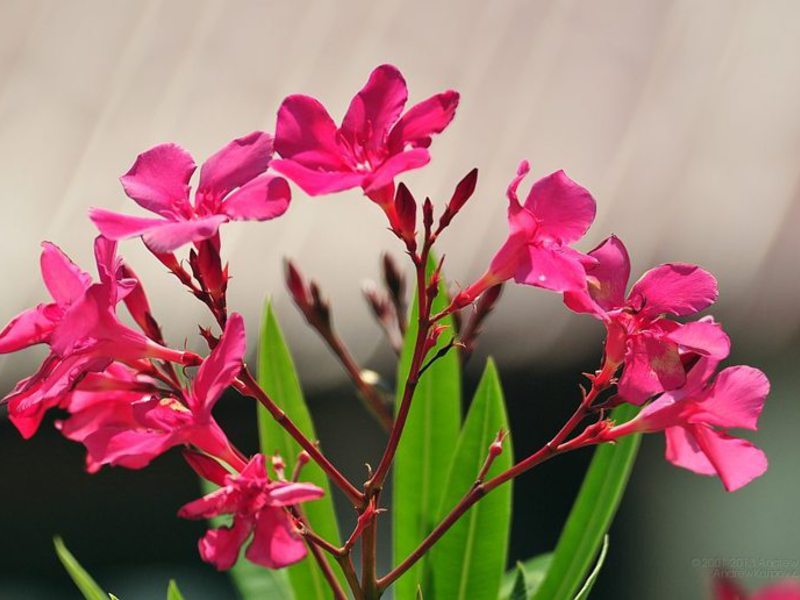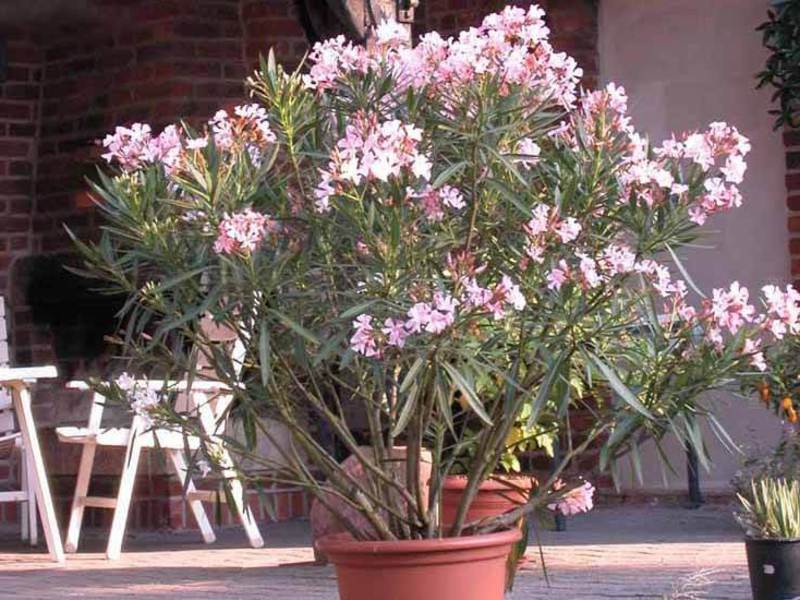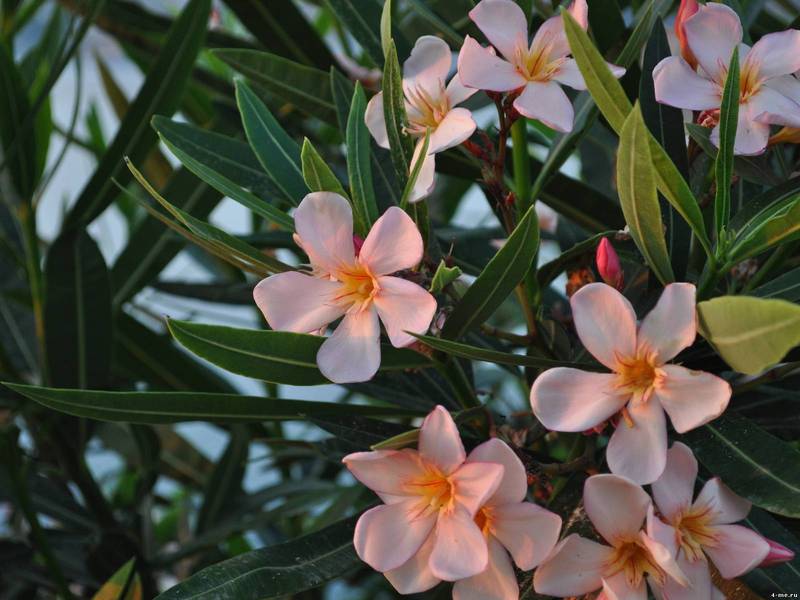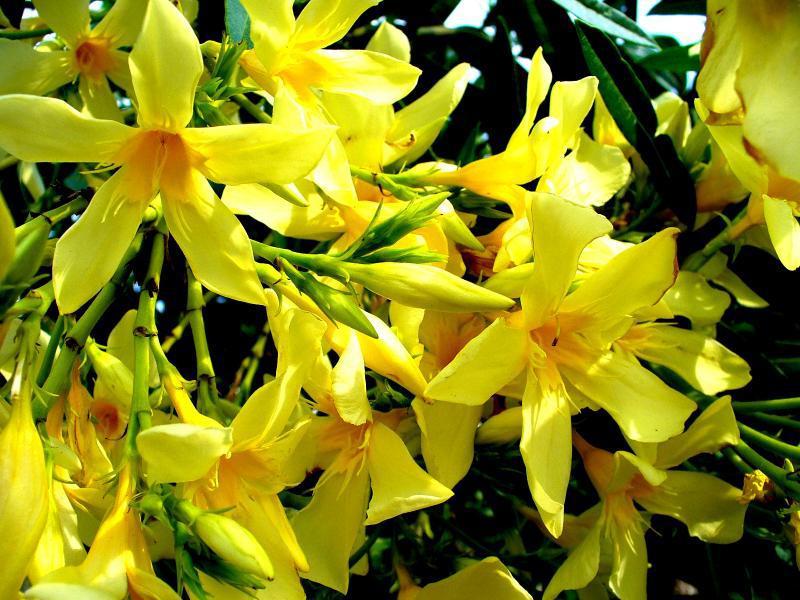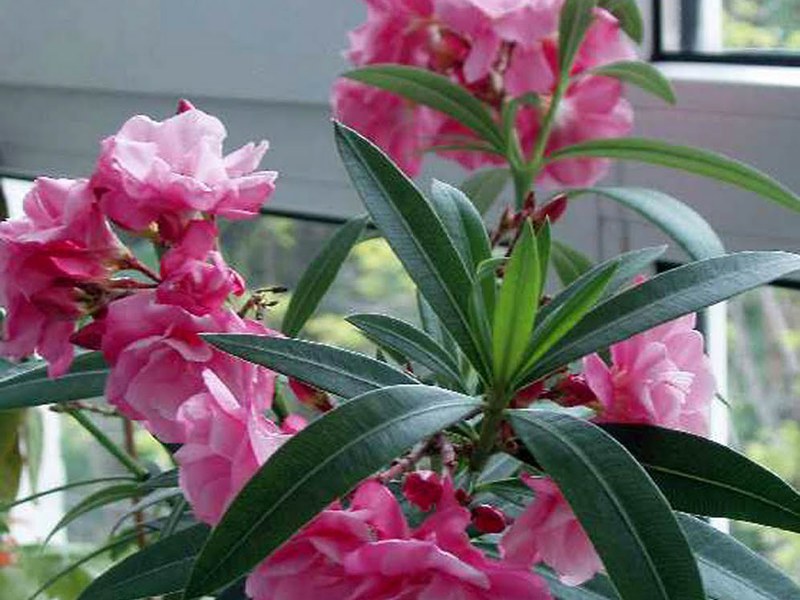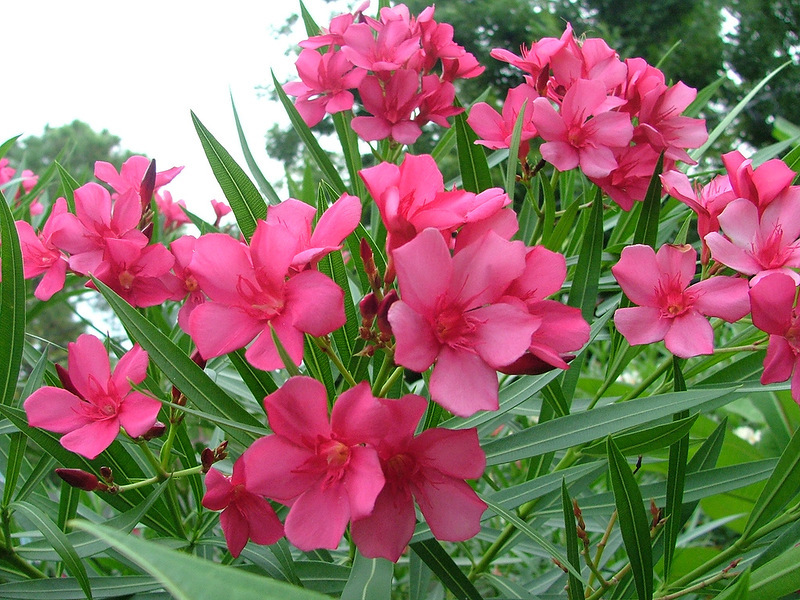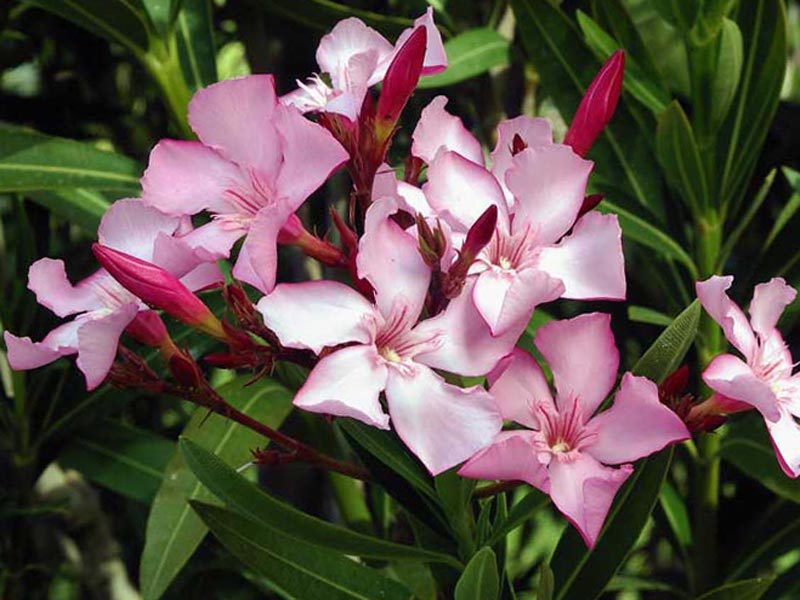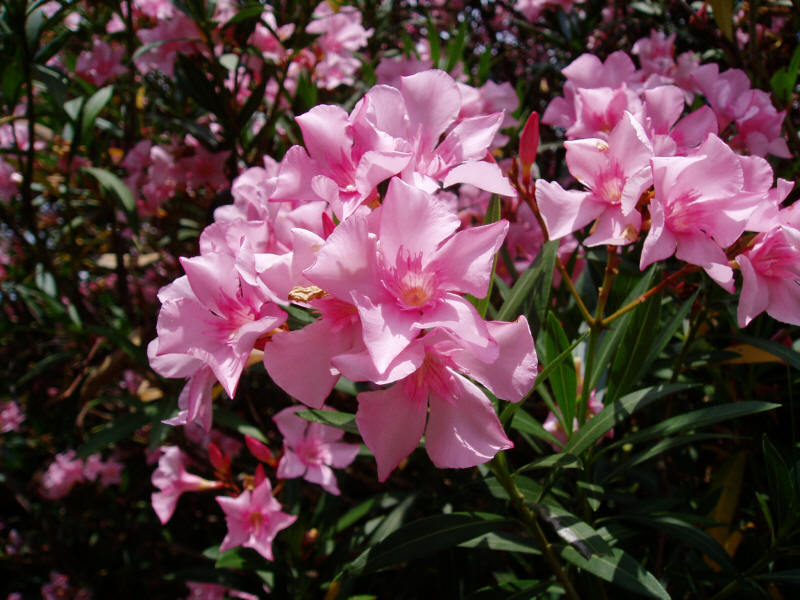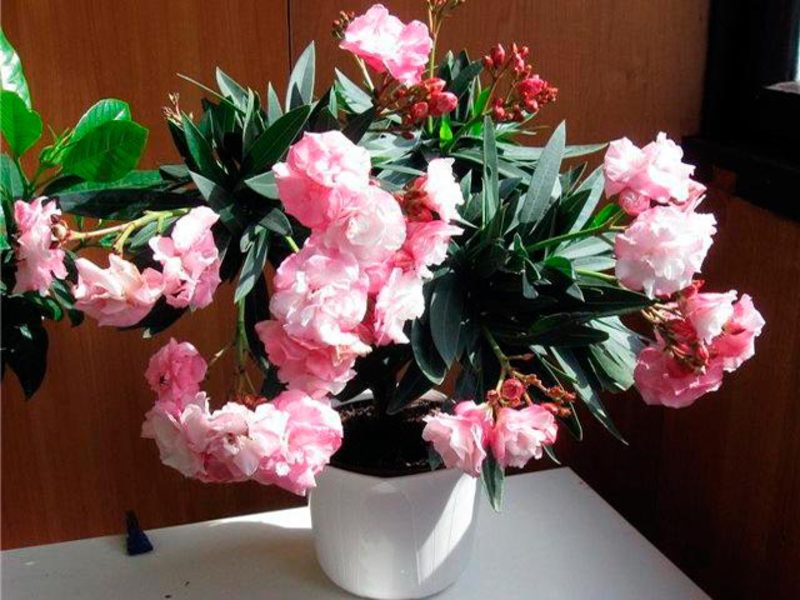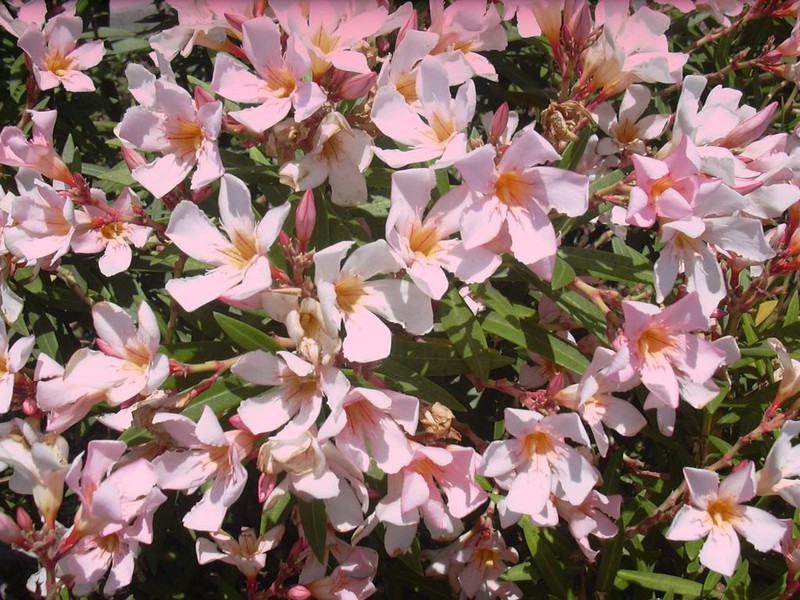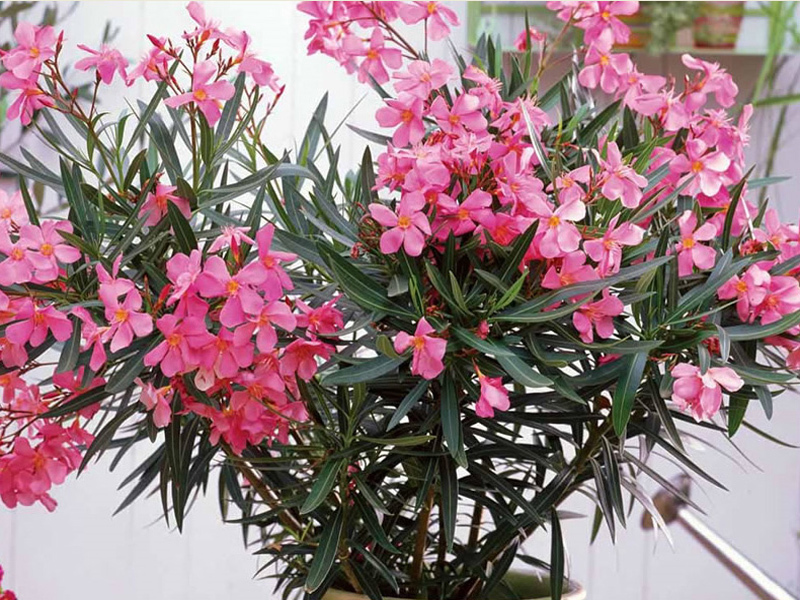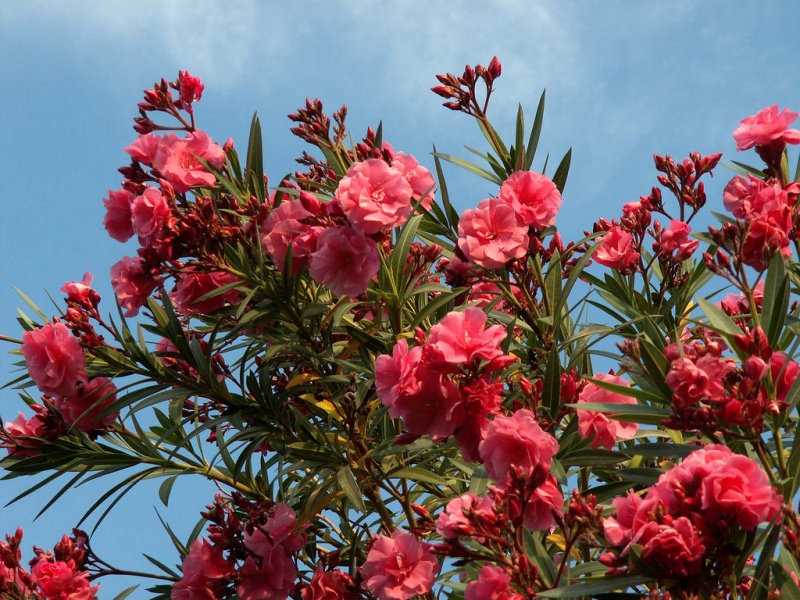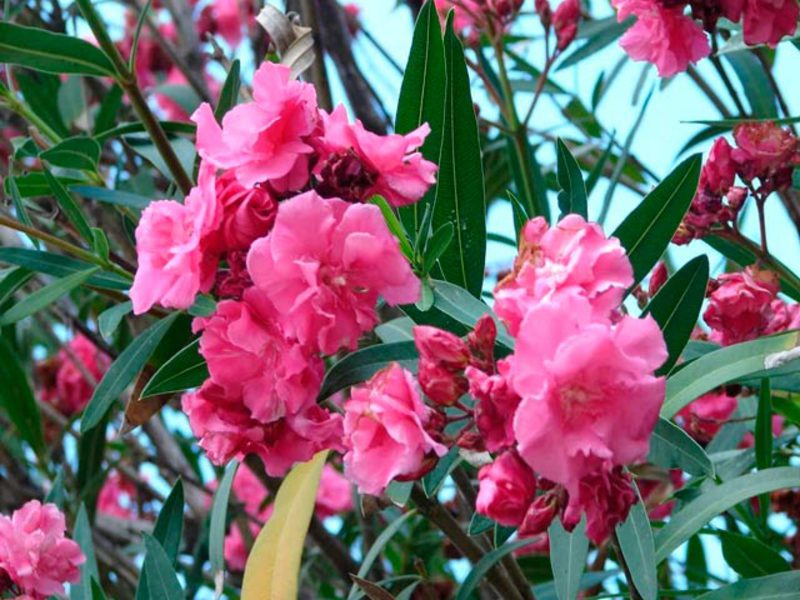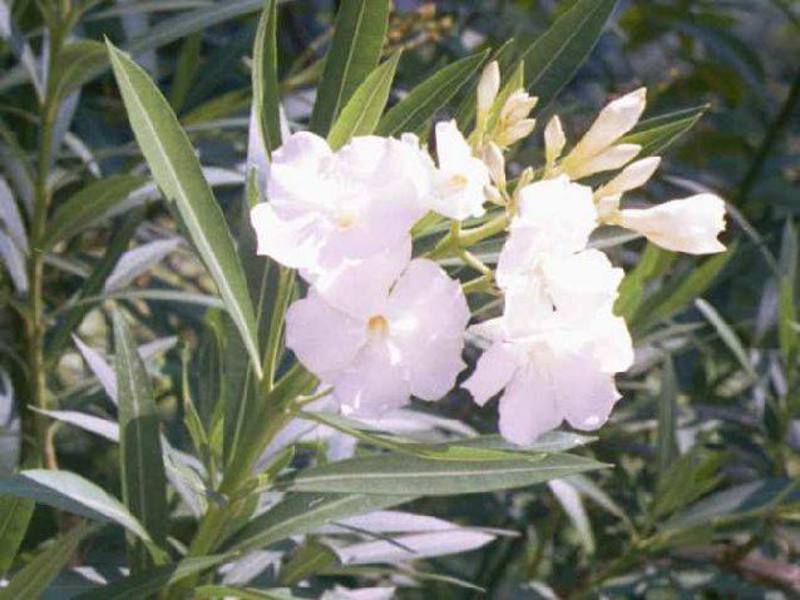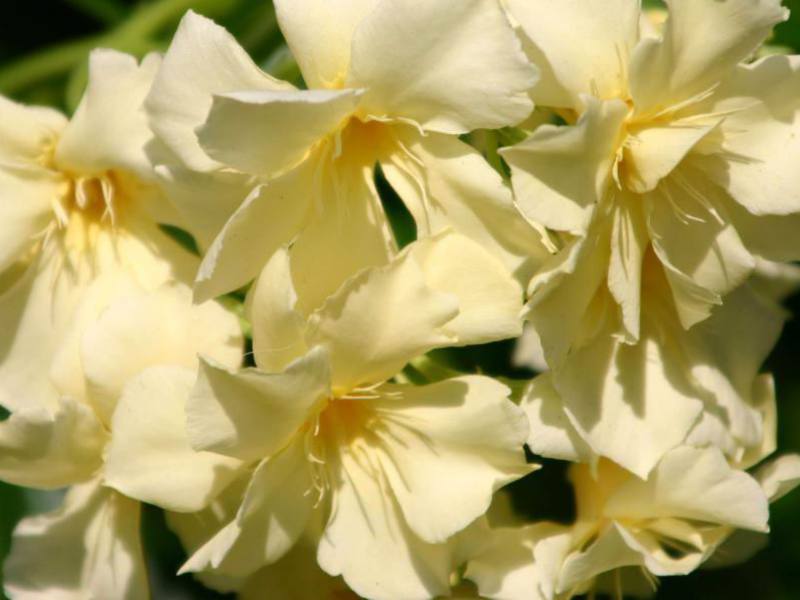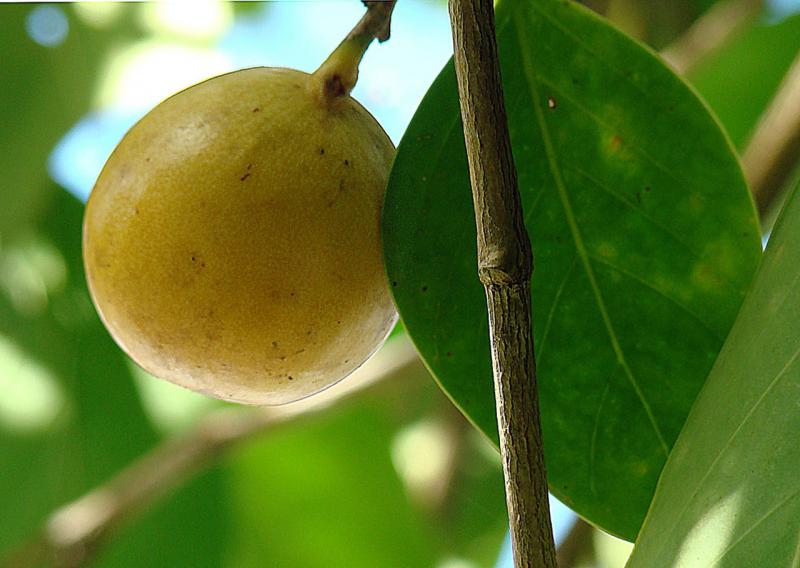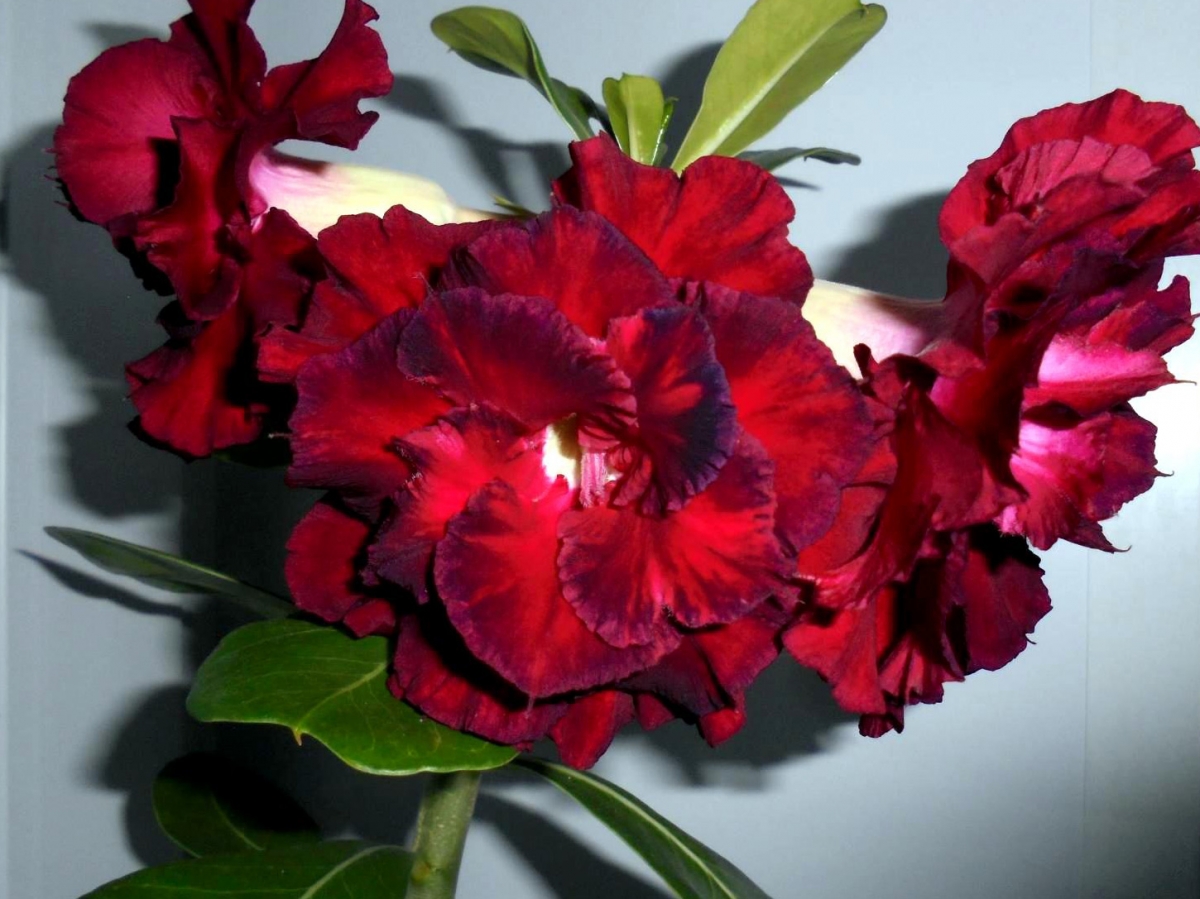Oleander is a perennial evergreen shrub with elongated leathery leaves, brownish stems, and brightly fragrant flowers. The plant is native to the western part of China, Morocco and the tropical zones of Portugal. It is not recommended to keep African plants indoors as they emit harmful fumes that can cause dizziness and headache.
The flower adapted for indoor conditions was grown in southern Europe. Caring for such an oleander is quite simple, but it requires adherence to certain recommendations.
Content
Oleander or pink laurel - description, photo
Oleander is called pink laurel because its brown stems are covered with dark green leathery pointed leaves like the laurel.
In nature, a tree grows up to four meters... At home, an oleander bush can grow up to two meters. That is why it is recommended to keep it in spacious rooms with good lighting.
The beautiful fragrant flowers of pink laurel are collected in carpal inflorescences and can be simple or double. In the photo in our gallery you can see plants that have yellow, red, pink and white colors of flowers.
When growing oleander, you should be aware that the plant contains poisonous juice. Therefore, you should take care of it very carefully. The flower is not recommended to be placed in the bedroom, in the room where children and pets will live, and when pruning a bush it is recommended to wear gloves, and cover your face.
But oleander can be very useful too. Experts noted that in the house where this beautiful flower settled, there are significantly less toxins and toxins.
Oleander species - photo
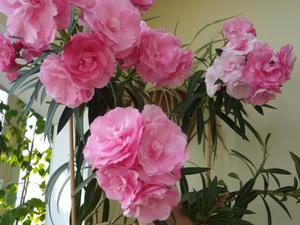 The plant is divided into three types:
The plant is divided into three types:
- Common oleander.
- Indian.
- Fragrant.
In turn, the common oleander has many varieties with different flower colors. Classic plant varieties have white, yellow, red and pink color... The flowers of hybrid varieties can be huge snow-white and lush crimson, monochromatic and variegated.
Indian and fragrant oleanders cannot boast of such a variety of varieties, however, this does not mean that there is nothing interesting in them.
So, for example, the Indian oleander from June to October blooms with large five-petal, bright flowers with a sweet smell, which can be yellow, red, pink, white. Fragrant oleander grows to only 50 centimeters and has a great scent.
Oleander - care and cultivation
Pink laurel is an unpretentious plant, which even a novice florist can grow at home.
For a plant to grow well and bloom luxuriantly, it needs good lighting. Southeast-facing windows are best suited for this. When the flower is located on the north side or in the back of the room, the lack of light can be compensated for by artificial lighting.
In the summer, it is recommended to take the oleander to the street or loggia. In this case, the plant must be protected from precipitation and direct sunlight. In the winter season, a flower backlight required fluorescent lamps. Daylight hours should last eight hours, and the lamps should be located no closer than seventy centimeters from the bush.
Optimal conditions for growing oleander
Pink laurel loves moist air, stable temperatures and well-fertilized soil. Therefore, when caring for him at home, it is necessary follow some rules.
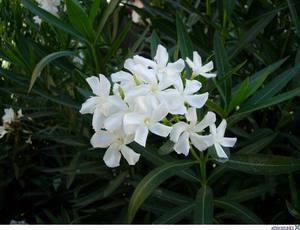 In summer, keep the air temperature within 23-28C.
In summer, keep the air temperature within 23-28C.- In winter, the temperature should be reduced to 10-15C.
- Water the oleander abundantly, immediately after the topsoil dries.
- If the temperature in the room in autumn and winter does not exceed 20C, then it is recommended to water the flower no more than three times a week.
- Water for irrigation must be defended. It should be at room temperature.
- It is very important to monitor watering and prevent soil acidification. Otherwise, the root system will start to rot and the oleander may die.
- During the heating season and in the heat, the plant must be sprayed. If the air in the room is too dry, the tips of the leaves will begin to dry out.
- You can ensure a high level of air humidity using a pot with wet drainage placed next to the bush.
- In spring and summer, when the oleander grows and blooms, it needs additional feeding. For this, you can use organic or special complex fertilizers.
- It is recommended to feed the flower in the morning or in the evening, an hour after watering.
Transplanting and pruning oleander
Immediately after purchasing a plant, it is required from peat transplant into a fertile substrate, which can be of several types:
- a mixture of garden soil, manure and peat;
- a mixture of humus and clay.
Young plants are replanted every spring, and adults every two or three years.
For a correct transplant, you must:
- Pour a drainage layer on the bottom of the pot, which can be gravel, expanded clay or small pebbles.
- Pour a small amount of earthen mixture into the second layer.
- Carefully remove the flower from the old container and place it on the substrate.
- Add the required amount of soil around the roots of the plant and at the same time press it against the roots.
After the bush is planted, it must be watered abundantly.
In order for the oleander to bloom profusely, while caring for it, you must not forget that the plant requires regular pruning. Such a procedure is performed immediately after flowering, while the branches should be cut off by half of the entire length.
Experienced florists annually recommend completely cut a few weak shoots... This will make room for new growth, and the bush from below will not be bare.
Withered petals must be removed carefully, without damaging the inflorescences, which can give repeated flowers.
Possible problems when growing oleander
Growing any plant at home, including oleander, will not always be problem-free. Improper care or maintenance, diseases, pests can destroy a flower.
Therefore it is necessary examine the main problemsmost often encountered by flower growers when caring for indoor oleander:
 If the leaves of a plant dry up and wither, then most likely it lacks moisture.
If the leaves of a plant dry up and wither, then most likely it lacks moisture.- The bush can shed leaves when the room temperature is too low. Therefore, even in summer, the temperature must be monitored, and on cold nights the flower should be brought into the room.
- The yellow leaves of the shrub indicate over-watering or improper fertilization of the flower.
- Oleander may stop blooming due to lack of light, poor ventilation, or too high an air temperature. Also, the reason may lie in a too tight pot.
- Oleander can shed its buds due to watering the plant with cold water or low indoor temperatures.
- Leaves covered with black dots signal that the plant is suffering from a fungal disease. The fungus tightly covers the green leaf, as a result of which the process of photosynthesis is disrupted, and the plant weakens.
- Brown and white clusters on the leaves are thrips, spider mites, mealybug or a shield. Pest control should be done with special insecticides.
- The presence of growths on the stems, and white spots on the leaves, indicates that the plant has oleander cancer or bacteriosis. By removing the infected leaves, you can try to save the flower.
With proper care, adherence to the humidity and temperature conditions, such problems should not arise.
Breeding methods of oleander
Propagate oleander at home in three ways:
- air layering;
- cuttings;
- seeds.
Reproduction by layering
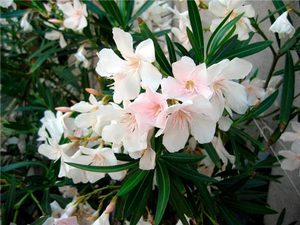 Propagation by air layers is a fairly simple and effective way. For the appearance of roots, it is necessary to cut a branch, remove the bark and lower the allotted place into a container with water or in wet sand.
Propagation by air layers is a fairly simple and effective way. For the appearance of roots, it is necessary to cut a branch, remove the bark and lower the allotted place into a container with water or in wet sand.
After the roots appear, the branch is cut off from the main plant and planted in a prepared earthen mixture.
Oleander cuttings
With the help of cuttings, the plant propagates in spring or autumn. To do this, shoots are cut from the bush, the length of which should be about 15 centimeters. For rooting, you can use the cuttings left after pruning the oleander.
Places of cuts are needed treat with coal powder, and place the cuttings in a mixture of sand, perlite and charcoal.
The container with the planted cuttings should be placed in a well-lit room with a stable temperature regime. To prevent the cuttings from rotting, watering should be moderate.
After about a month, the shoots will give roots, and they can be transplanted into a mixture with equal proportions of peat soil, turf, sand and humus.
Seed propagation
Oleander seeds have low germination, so it is recommended to sow them immediately after harvest.
Before planting, the seed is soaked for thirty minutes in a weak solution of a fungicide or potassium permanganate. After that, they should be held for an hour. in Heteroauxin solution or Zircon.
Seeds should be sown superficially in the same earthy mixture in which oleander grows. The temperature in the room where the seeds will germinate should be in the range of 30-35C. If the temperature is lower, the seeds may rot or the emergence of seedlings may be delayed for a long time. Under favorable conditions, seedlings germinate for 10-12 days.
Care of the appeared seedlings includes:
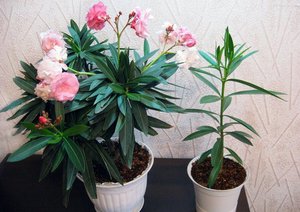 supplementary lighting with artificial light;
supplementary lighting with artificial light;- airing the room;
- ensuring optimal temperature and high humidity;
- adaptation of plants with three leaves to normal keeping conditions.
After the appearance of 4-5 true leaves, young oleander sprouts are planted in separate pots.
It is not difficult to grow and even propagate oleander at home. This unpretentious plant, with proper care, will delight and surprise for a long time with its beautiful, bright and lush flowering.
